Scar Revision in Birmingham AL
Minimize Scars Anywhere on the Body
Scars are visible signs that remain after a wound has healed. They are the unavoidable results of injury or surgery, and their development can be unpredictable. Poor healing may contribute to scars that are obvious, unsightly or disfiguring. Even a wound that heals well can result in a scar that affects your appearance. Scars may be noticeable due to their size, shape or location. They can also be raised or depressed, and may differ in color or texture from the surrounding healthy tissue.
Scar Revision is plastic surgery performed to improve the condition or appearance of a scar anywhere on your body. Scar revision surgery is meant to minimize a scar so that it is less conspicuous and blends in with the surrounding skin tone and texture.
Treatment options at our Birmingham, Alabama plastic surgery center vary based on the type and degree of scarring. They can include simple topical treatments, minimally-invasive procedures and surgical revision with advanced techniques in wound closure.
Scar Revision Candidates
Scar revision can be performed on people of any age and is a good option for you if:
- You are bothered by a scar anywhere on your body.
- You are physically healthy.
- You do not smoke.
- You have a positive outlook and realistic goals for your scar revision surgery.
- You do not have active acne or other skin diseases in the area to be treated.
Types of Scars
The type of scar you have will determine the appropriate technique(s) your plastic surgeon will use to improve your scar.
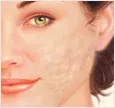
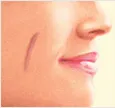

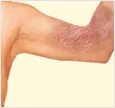
Discoloration and Surface Irregularities
Discoloration, surface irregularities and other more subtle scars can be cosmetically improved by surgery or other treatments recommended by your plastic surgeon. These types of scars do not impair function or cause physical discomfort. They include acne scars as well as scars resulting from minor injury and prior surgical incisions.
Hypertropic Scars
Hypertropic scars are thick clusters of scar tissue that develop directly at a wound site. They are often raised, red and/or uncomfortable. Hypertropic scars may become wider over time. They can be hyperpigmented (darker in color) or hypopigmented (lighter in color).
Keloid Scars
Keloids are larger than hypertropic scars. They can be painful or itchy and may also pucker. They extend beyond the edges of an original wound or incision. Keloids can occur anywhere on your body, but develop more commonly where there is little underlying fatty tissue, such as on the face, neck, ears, chest or shoulders.
Contracture Scars
Contractures are scars that restrict movement due to skin and underlying tissue that pull together during healing. They can occur when there is a large amount of tissue loss, such as after a burn. Contractures can also form where a wound crosses a joint, restricting movement of the fingers, elbows, knees or neck.
Your Scar Revision Consultation
The success and safety of your scar revision procedure depends very much on your complete candidness during your consultation. You will be asked a number of questions about your health, desires and lifestyle. Be prepared to discuss:
- Why you want the surgery, your expectations and desired outcome.
- Medical conditions, drug allergies and medical treatments.
- Use of current medications, vitamins, herbal supplements, alcohol, tobacco and drugs.
- Previous surgeries.
Your scar revision surgeon may also:
- Evaluate your general health and any pre-existing health conditions or risk factors.
- Examine your scar in detail.
- Take photographs for your medical records.
- Discuss your options and recommend a course of treatment.
- Discuss likely outcomes and any risks or potential complications.
- Answer any questions you have about scar revision.
Scar Revision Risks and Safety
Each patient must decide if the benefits of scar revision surgery will achieve their goals, and if the risks and potential complications are acceptable. The risks of scar revision include:
- Anesthesia risks.
- Asymmetry.
- Bleeding.
- Deep vein thrombosis, cardiac and pulmonary complications.
- Fatty tissue found deep in the skin might die (fat necrosis).
- Fluid accumulation (seroma).
- Hematoma.
- Infection.
- Numbness or other changes in skin sensation.
- Persistent pain.
- Poor healing of incisions.
- Possibility of revisional surgery.
- Recurrent looseness of skin.
- Skin discoloration and/or prolonged swelling.
- Skin loss.
- Suboptimal aesthetic result.
- Unfavorable scarring.
Your plastic surgeon and/or staff will explain in detail the risks associated with scar revision. You will be asked to sign consent forms to ensure that you fully understand your scar revision procedure, the alternatives and the most likely risks and potential complications.
Preparing for Scar Revision
Prior to scar revision surgery, you may be asked to:
- Get lab testing or a medical evaluation.
- Take certain medications or adjust your current medications.
- Stop smoking well in advance of surgery.
- Avoid taking aspirin and certain anti-inflammatory drugs and herbal supplements, which can increase bleeding.
Special instructions you receive will cover:
- What to do on the day of surgery.
- The use of anesthesia during your procedure.
- Postoperative care and follow-up.
Scar revision surgery is performed at our accredited Outpatient Surgery Facility in Birmingham, Alabama where your plastic surgeon and our staff will fully attend to your comfort and safety.
Scar Revision Procedures
The severity of your scarring — along with the type, size and location of the scar — will determine the appropriate scar revision technique(s) and the degree of improvement that can be expected. In some cases a single technique may provide significant improvement. However, your plastic surgeon may recommend a combination of scar revision techniques to achieve the best results.
Anesthesia choices for scar revision include local anesthesia, intravenous sedation and general anesthesia. Your doctor will recommend the best choice for you.
Topical Treatments
Topical treatments — such as gels, tapes or external compression — can help in wound closure and healing, or to reduce the ability of skin to produce irregular pigment. These products may be used to treat existing surface scars and discoloration, and aid in the healing of other scar revision procedures.
Injectable Treatments
Dermal fillers are an effective option to fill depressed or concave scars. Depending on the injectable substance used and the particular conditions of your scar, results may last from 3 months to several years. Since volume-enhancing results with dermal fillers are temporary, therapy must be repeated to maintain the best results.
Another form of injection therapy uses steroidal-based compounds to reduce collagen formation and alter the appearance, size and texture of raised scar tissue.
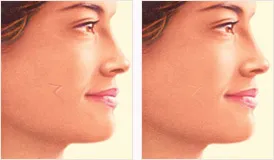
Surface Treatments
Surface treatments are most often used for the cosmetic improvement of scars. These methods can soften surface irregularities and reduce uneven pigmentation. Surface treatments are a means of either mechanically removing the top layers of skin or changing the nature of tissue. These treatments include:
- Dermabrasion mechanically polishes the skin.
- Laser or light therapy causes changes to the skin's surface that allow new, healthy skin to form at the scar site.
- Chemical peels soften irregularities in texture and color by penetrating the skin's surface.
- Skin bleaching agents lighten the skin with medications applied topically.

Surgery for Deeper Scars
For deeper scars, an incision is sometimes needed to surgically remove the old scar.
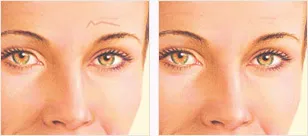
Layered CLosure
Some scars require layered closure, often used where excision extends to tissue below the skin's surface or in areas with a high degree of movement. First, closure below the skin's surface is performed with absorbable or non-removable sutures. Layers of closure continue to build, concluding with closure of the remaining surface wound.
Flap Closure
Advanced techniques in scar revision include complex flap closures and W-plasty or Z-plasty techniques. Flap closures may reposition a scar so that it is less conspicuous or improve flexibility where contracture has restricted mobility.
Tissue Substitutes
Pharmaceutical tissue substitutes may be used if ample healthy tissue is not present for closure of a scar excision. This is more likely with revision of severe burn scars.
Tissue Expansion
Tissue expansion can be a substitute for skin grafts. In this procedure, an inflatable balloon called a tissue expander is placed under the skin near the scar site. Over time, the balloon is slowly filled with sterile solution to expand the area of healthy skin. Once the skin has been sufficiently stretched, the expander and the scar is removed and the stretched skin is moved to replace the scar tissue. This process can involve multiple surgical stages or procedures in order to achieve the final results.
Scar Revision Recovery
Following your physician's postoperative instructions is key to the success of your surgery. You will be given specific instructions that may include:
- How to care for yourself following surgery.
- Medications to apply or take orally to aid healing and reduce the risk of infection.
- When to follow-up with your plastic surgeon.
Seek medical attention immediately if you experience shortness of breath, chest pains or unusual heartbeats after going home. You may require hospitalization and additional treatment if any of these complications occur.
When your procedure is finished, bandages or dressings may be applied to keep the surgical site clean.
It's important that the surgical incisions are not subjected to excessive force, abrasion or motion during the time of healing.
The initial healing phase of a surgical scar revision may include localized swelling, discoloration or discomfort and may take 1 to 2 weeks. Healing will continue for several weeks and as the new scar heals it will slowly refine and fade. With dermabrasion, chemical peel or laser resurfacing, you will experience similar conditions at the treated area in addition to overall sensitivity.
Scar Revision Results
The final results of your scar revision surgery will be long-lasting. However, it may take several months for your final results to become apparent. In some cases it may take a year for the new scar to fully heal and fade.
Although scar revision can provide a more pleasing cosmetic result or improve a scar that has healed poorly, a scar cannot be completely erased.
Although good results are expected with your scar revision, there are no guarantees. In some situations it may not be possible to achieve optimal results with a single surgical procedure and another surgery may be necessary.
Scar Revision Words to Know
- Chemical peel solutions: Substances that penetrate the skin's surface to soften irregularities in texture and color.
- Contractures: Scars that restrict movement due to skin and underlying tissue that pull together during healing and usually occur when there is a large amount of tissue loss, such as after a burn.
- Dermabrasion: Mechanical polishing of the skin.
- Excision: Surgical removal of a scar.
- General anesthesia: Drugs and gases used during an operation to relieve pain and alter consciousness.
- Hyperpigmented scar: A scar that is darker in color.
- Hypertropic scar: Thick clusters of scar tissue that develop directly at a wound site.
- Hypopigmented scar: A scar that is lighter in color.
- Intravenous sedation: Sedatives administered by injection into a vein to help you relax.
- Keloids: Large scars that can be painful or itchy, and may also pucker which can occur anywhere on your body, developing more commonly where there is little underlying fatty tissue, such as on the breastbone or shoulders.
- Laser resurfacing: A method to change to the surface of the skin that allows new, healthy skin to form at the scar site.
- Light therapy: (Intense Pulsed Light) Pulses of light that can be used to treat discoloration and texture changes of the skin.
- Local anesthesia: A drug injected directly to the site of an incision during an operation to relieve pain.
- Skin grafts: Healthy skin taken from other areas of your body, such as the abdomen or thigh, to revise a scar.
- Tissue expansion: A procedure that can substitute for skin grafts. An inflatable balloon called a tissue expander is placed under the skin near the scar site to stretch additional skin to be used to revise a scar. Oftentimes, multiple procedures are needed.
- Z-plasty: A surgical technique that creates angled flaps on either side of the original scar site that can completely reposition or change scar direction, interrupt scar tension or improve scar flexibility.
Procedure Information © American Society of Plastic Surgeons
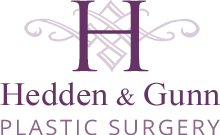
Scar Revision minimizes the appearance of scars to make them more consistent with the surrounding skin.
Birmingham, AL Office & Surgery Suites
Hedden & Gunn Plastic Surgery140 Village Street
Birmingham, AL 35242
205-980-1744 or 800-HeddenMD
 *
*  *
* 
Contact Us Today
Questions About Skin Procedures?
To learn more about Scar Revision procedures at Hedden & Gunn Plastic Surgery, please contact our Birmingham, AL practice today.
To schedule your consultation at the earliest possible date, please call 205-980-1744.
required fields are marked with an asterisk *
